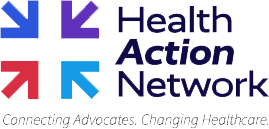A quick roundup of the issues driving the healthcare reform conversation.

Week in Review
HEALTHCARE PRICES & JOBS Rising healthcare prices have increased unemployment.
Quick takeaway: New data shows that surging prices for healthcare not only impact Americans’ budgets, but could be costing them their jobs.
Digging deeper: According to a new study in the National Bureau of Economic Research, a 1 percent increase in healthcare prices lowers an employer’s headcount by 0.4 percent. Not only that, those job losses are concentrated among workers earning less than $100,000.
The research also shows that for the average county, a 1 percent increase in healthcare prices reduces aggregate income by $8 million annually.
What it means: Because most people with health insurance are covered through their employer, there’s a direct link between healthcare prices and labor market dynamics. As such, researchers point out how vitally important it is to understand that these rising prices aren’t just impacting patients – they’re also hurting the employment outcomes of workers who aren’t even seeking care.
Rx PATENTS Addressing Big Pharma’s patent abuses could lead to billions of dollars in savings.
Quick takeaway: A bipartisan drug patent bill could narrow the federal budget deficit by about $3 billion over 10 years.
Digging deeper: Among the proposed bill’s provisions:
- Drug manufacturers would be prohibited from “product hopping” (shifting demand from a drug that’s about to face generic competition to a newly-patented version)
- Imposing private sector mandates by limiting assertions of patent infringement
According to the nonpartisan Congressional Budget Office’s (CBO) score of the bill, the estimated budgetary impacts would flow from:
- Lower federal spending for prescription drugs and biological products
- Lower spending on federal subsidies for health plans covering those prescription drugs and biological products
What it means: CBO estimates that, between 2024 and 2034, the bill would reduce direct spending by $2.4 billion and increase revenues by $585 million, leading to a net decrease in the federal deficit by $3 billion.
NONPROFIT HOSPITALS A deeper look at nonprofit hospitals’ improved financial well-being.
Quick takeaway: The nation’s 10 largest nonprofit health systems reported an average 8.4 percent increase in total operating revenues last year from the previous year.
Digging deeper: A mixture of improved economic conditions and the return of patients seeking services, saw the hospital sector on surer financial footing in 2023. This held true for nonprofit hospitals, as well, especially among the larger systems in the U.S.
What it means: As their operating conditions improve, industry watchers are making sure to remind policymakers that the tax benefits enjoyed by these large nonprofit health systems come with strings attached in the form of their “community benefits” obligations.
As a condition of their tax exempt status, these hospitals are required to deliver benefits to the communities they serve in the form of charity care or financial assistance and local health improvement programs.
Unfortunately, given the insufficient enforcement of these requirements, in addition to the lack of a regulatory definition of “community benefits,” research shows that nonprofit hospitals are by and large failing to meet these obligations.
PRICE TRANSPARENCY Majority of hospitals still non-compliant with price transparency requirements.
Quick takeaway: A report from earlier this year shows that only about one-third of hospitals reviewed are fully compliant with the federal price transparency rules that went into effect in 2021.
Digging deeper: As of this past February, only 34.5 percent of 2,000 hospitals reviewed by a nonprofit watchdog were deemed to be in full compliance with price transparency rules. That represents a slight decrease from July of 2023, when 36 percent of hospitals were in full compliance.
What it means: The rules were enacted to give patients better insights into what common medical procedures and services cost in the same market.
However, the report’s findings reveal a concerning lack of compliance, combined with an alarming disparity in prices – with variations up to 10-fold within the same hospitals and a staggering 31-fold across hospitals in the same region, suggesting the need for greater enforcement of the price transparency rules.
Spotlight
| You can keep up with the latest by following the Health Action Network on X and by liking us on Facebook. And, be sure to check us out on LinkedIn, too. As always, let us know if there’s something you’d like to see covered in a future newsletter. |
The Health Action Network includes everyday Americans—families, workers, businesses, patients, providers, neighbors, and friends. We are working together because we support market-based solutions that offer better healthcare choices and help build a stronger economy. The Health Action Network is an Elevance Health, Inc., initiative.

